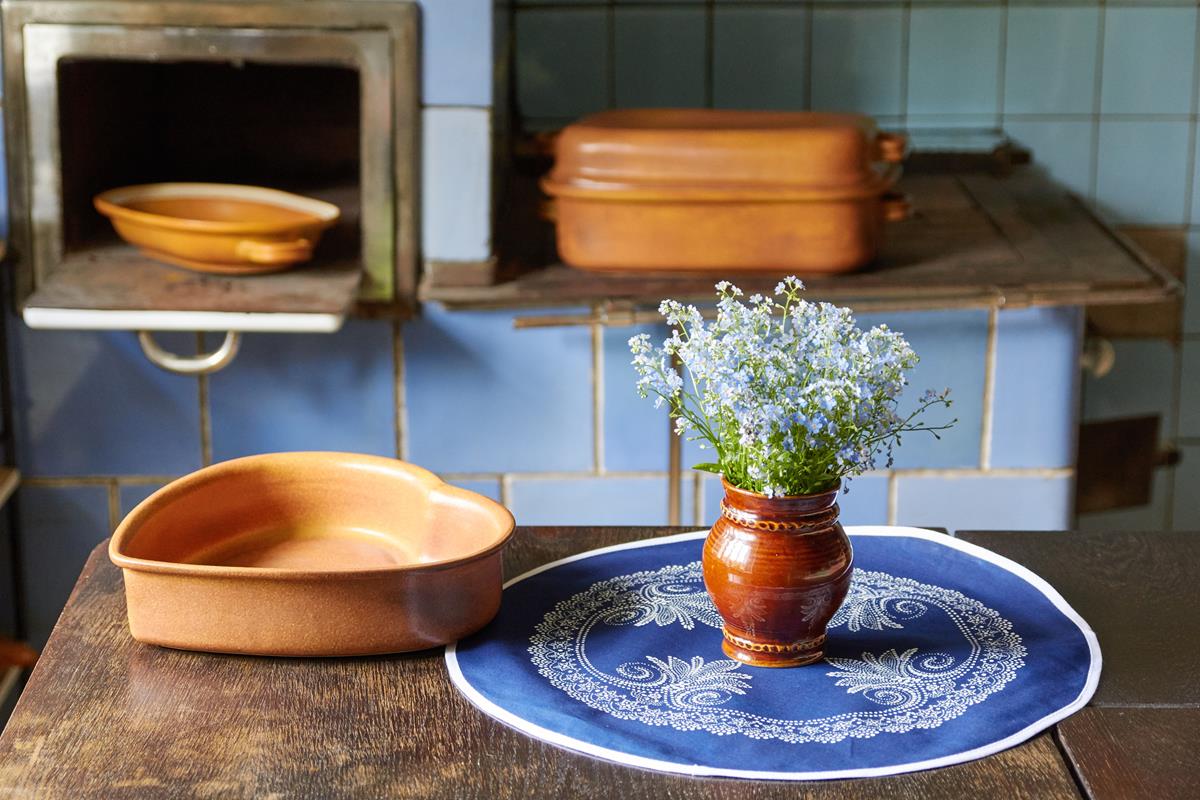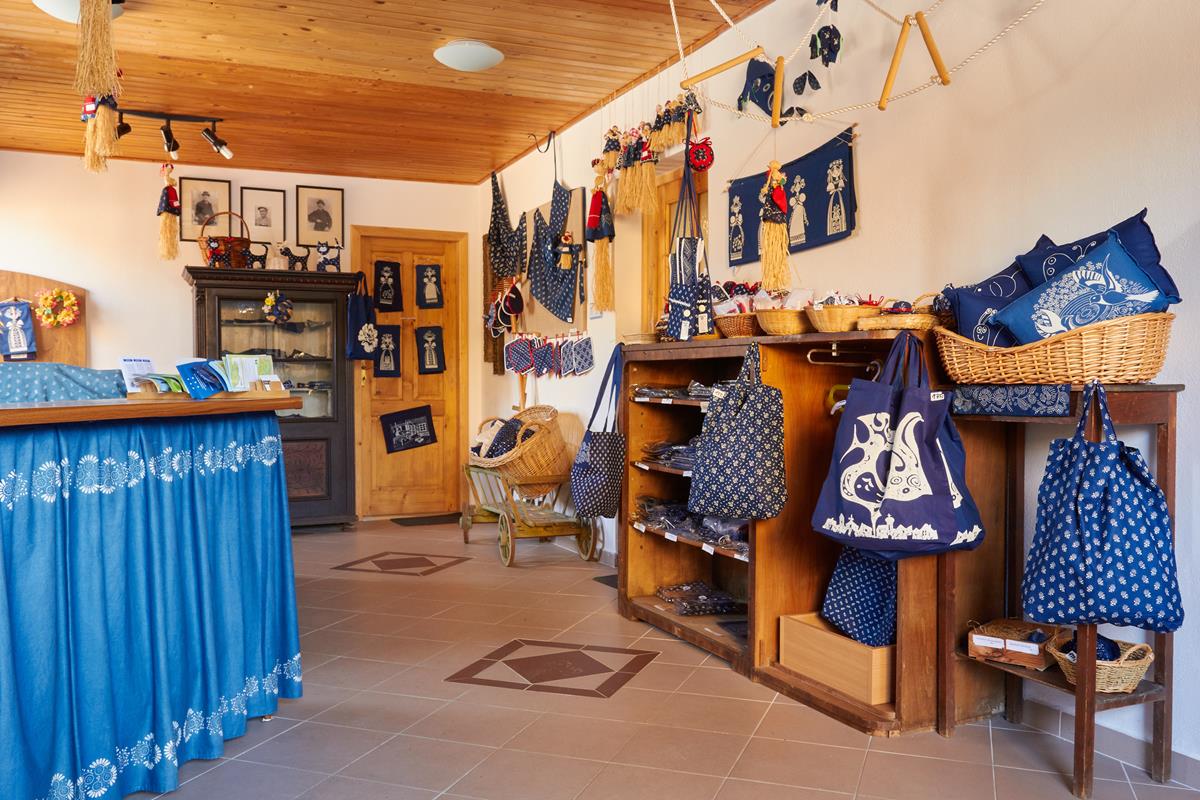The Kimono is a traditional Japanese garment known by people all over the world. But can you imagine that it could be possible to innovate it? A similar dilemma was faced by Czech designer Alice Klouzková, who tried to find a way to make a dress from the traditional Blaudruck fabric from Czechia in a modern style. Have a look at what manual production of the Blaudruck fabric looks like, and buy unconventional fashion accessories that no one else has as each item is an original.
Wealthy clientele
Blaudruck (literally “Blaudruck”; modrotisk in Czech) is a dark-blue fabric with a white pattern. In Asia it had been produced from the second millennium before Christ, and in the 18th century it started to be imported into Europe. “A pattern is printed on a white cloth, the fabric is then dipped in an indigo dye bath and, subsequently, it is further treated. Blaudruck used to be very expensive, particularly owing to the complex manual work involved. Only a wealthy clientele could afford it. The number of small workshops gradually increased in the country, and even rather poor people began to buy the blue and white fabric. They used it to make skirts and other parts of folk costumes which were worn on festive occasions. Different patterns were used in each country, mostly vegetable or animal ornaments”, says Czech designer Alice Klouzková, who has taken an interest in the history of textile crafts since her childhood.
Modern style
In 2008 she came for the first time to the unique Blaudruck workshop in Strážnice in the Hodonín district, where patterned fabrics have been produced for generations. On the website you can find a lot of original products, starting from tablecloths all the way to textile toys. “It immediately occurred to me that it would’ve been interesting to combine the traditional craft and the modern style of clothing. I created a collection featuring dresses, shirts and skirts made of the Blaudruck fabric, but I don’t use typical folklore patterns… What I like more is simple ornaments like stripes or polka dots”, explains the designer, who has presented the charm of Blaudruck all around the world as part of the travelling exhibition “Blue Innovations” in Czech centres. The inscription of this technique on the UNESCO Intangible Heritage List in 2018 also greatly contributed to the popularity of Blaudruck. Ever since, more attention has been paid to the manual production of printed fabrics than before.
Globally unique phenomenon
According to the designer, Blaudruck was on the decline in the early 20th century because there was an increase in the number of textile factories that produced en masse and sold their goods at lower prices than small workshops. However, Blaudruck survived in Czechoslovakia because the government had supported the development of traditional crafts for decades. There was the “Centre for Folk Art Production” in Prague, where visual artists and designers worked, and they combined Blaudruck and designed dresses or skirts based on current trends. “I think that we’re really unique in this because Blaudruck has been innovated in Czechia, whereas in the other European countries and in Asia it is still approached more as a traditional craft, where the same folklore motifs as one hundred years ago are still used”, says Klouzková, adding that there are only two workshops producing Blaudruck fabrics left in the Czech Republic. You can reserve an excursion there to see how the dyers work in detail. In the Danzinger family in Olešnice near Blansko, the tradition of this handicraft has already been handed down to the seventh generation, and it is also here where you can buy a new blue and white item for your flat or wardrobe. Interesting textile products inspired by the Czech craft can also be found at Lípa Store.




-(1).jpg?width=1920&height=1204&ext=.jpg)





